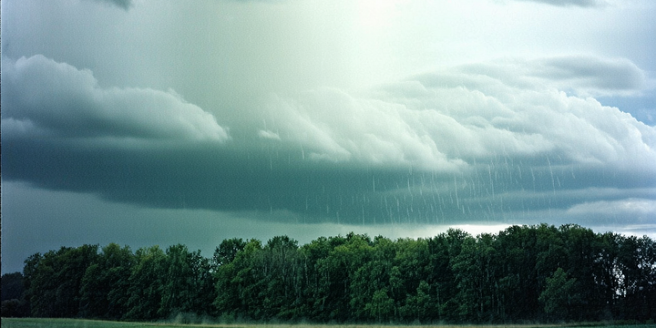
Understanding Cold Fronts: A Meteorological Overview
Cold fronts represent the leading edge of a cooler mass of air, replacing a warmer air mass at ground level. Typically, they move from northwest to southeast and are characterized by a drop in temperature, wind shifts, and often precipitation. When a cold front passes, it can cause significant changes in weather conditions, including thunderstorms or snow, depending on the season and geographical location. The interaction between differing air masses results in weather patterns that can be critical in forecasting. Understanding these dynamics is crucial for meteorologists to predict weather events accurately. Recognizing the signs of an approaching cold front can help in preparing for abrupt weather changes and mitigating potential impacts on various sectors, including agriculture, health, and renewable energy systems that are sensitive to climatic variations.
Impacts of Cold Fronts on Renewable Energy Production
Cold fronts can significantly impact renewable energy production, particularly affecting solar and wind energy systems. As cold fronts move in, they can bring overcast conditions, reducing solar power generation due to decreased sunlight. Additionally, strong winds associated with these fronts can either enhance or disrupt wind energy production. While some wind turbines may benefit from increased wind speeds, excessively high winds can cause shutdowns to prevent damage to the turbines. This variability poses a challenge for energy grid stability, as the supply can become inconsistent. Accurate weather prediction and robust grid management are essential to mitigate disruptions caused by these meteorological phenomena. The renewable energy sector must adapt by integrating flexible storage solutions and energy balancing mechanisms to accommodate the influence of cold fronts.
Adapting Renewable Energy Systems to Weather Extremes
Adapting renewable energy systems to cope with weather extremes, like those posed by cold fronts, requires strategic planning and technological innovation. One approach is to enhance the resilience of infrastructure, such as reinforcing wind turbines to withstand strong winds or incorporating snow-resistant materials in solar panels. Additionally, deploying energy storage systems can mitigate the unpredictability of energy production during extreme weather events by ensuring a steady supply. Diversification of energy sources within an integrated grid can also help balance output. For instance, hydropower may be adjusted to compensate for decreased solar output during cloudy periods. These adaptive strategies are crucial for maintaining energy reliability and are key components in the transition to a sustainable energy future in the face of evolving climate patterns.
Innovations in Renewable Technology Amidst Climate Variability
Technological advancements are playing a pivotal role in addressing the challenges posed by climate variability to renewable energy systems. Innovations such as bifacial solar panels, which can capture sunlight from both sides, and turbine designs optimized for varying wind conditions, are helping improve efficiency and reliability. Additionally, artificial intelligence and machine learning are being utilized to enhance weather forecasting and energy demand predictions, enabling better management of energy resources. The development of advanced storage solutions, such as high-capacity batteries and pumped hydro storage, offers pathways to store surplus energy for use during periods of low production. These innovations are crucial for adapting to the unpredictable nature of climate impacts, ensuring that renewable energy remains a viable and sustainable option despite environmental challenges.
Future Prospects for Renewable Energy in Cold Climates
The future of renewable energy in cold climates looks promising, given the advancements in technology and adaptation strategies. The focus on designing systems that can endure harsh weather conditions is key to improving resilience. For instance, research into antifreeze coatings for solar panels and low-temperature lubricants for wind turbines is advancing. The potential for geothermal energy in cold regions is also being explored, offering a stable energy source less impacted by surface weather conditions. Moreover, policy incentives and investments are driving regional renewable energy projects that capitalize on local resources. As technology continues to evolve and climate consciousness grows, these innovations will enhance the capacity for renewable energy to thrive even in the coldest environments, reducing dependency on fossil fuels and contributing to a sustainable energy future.
